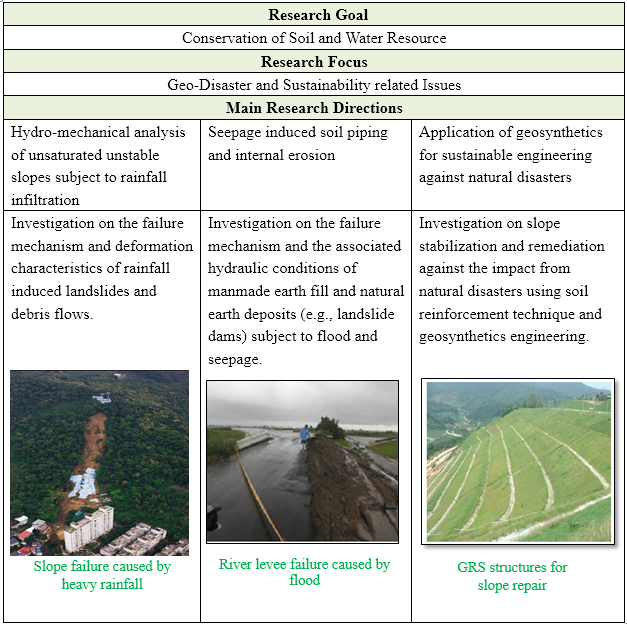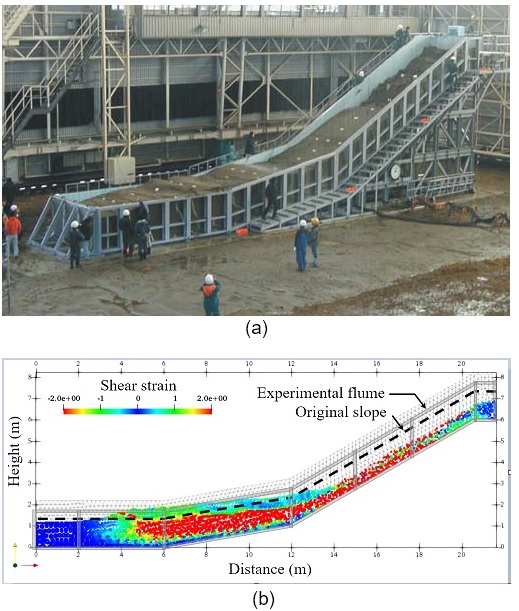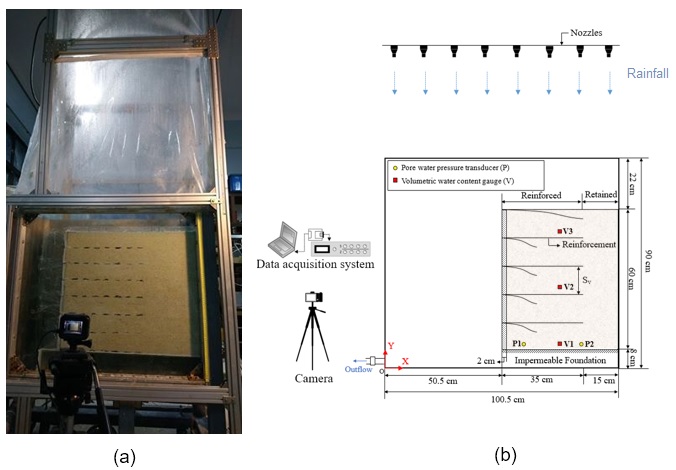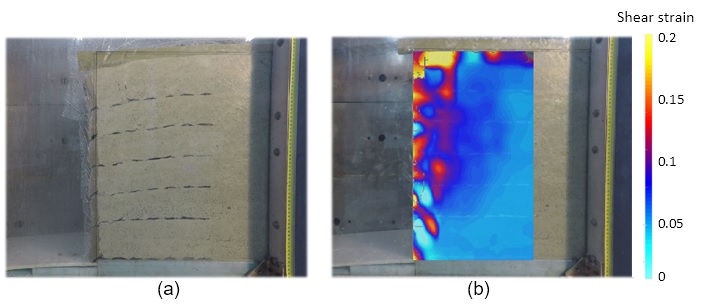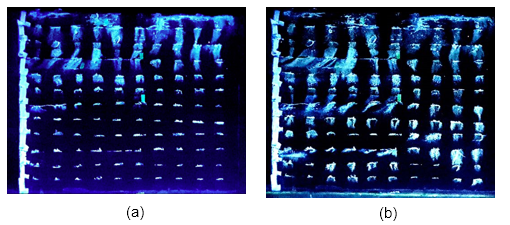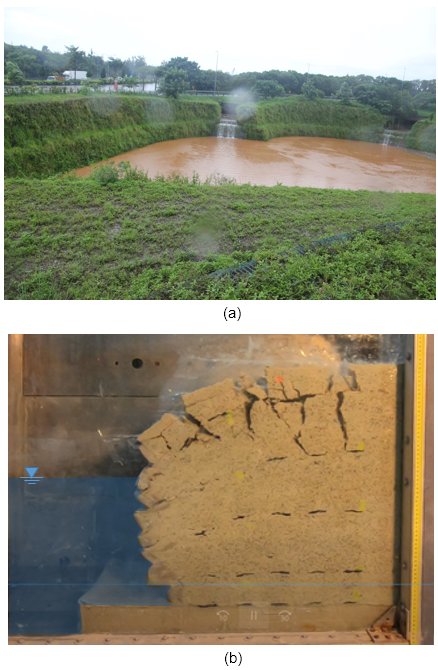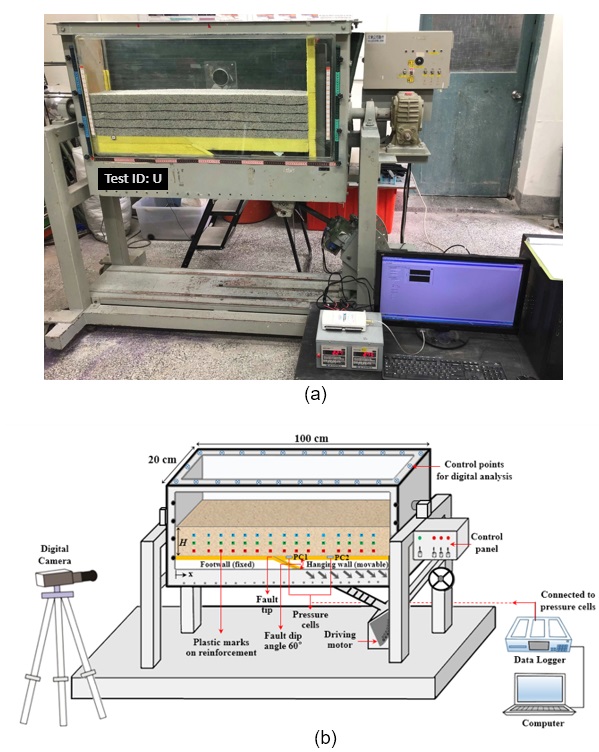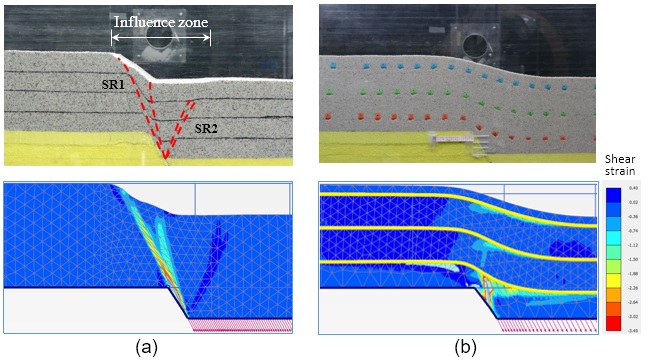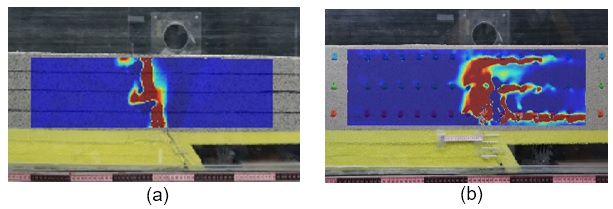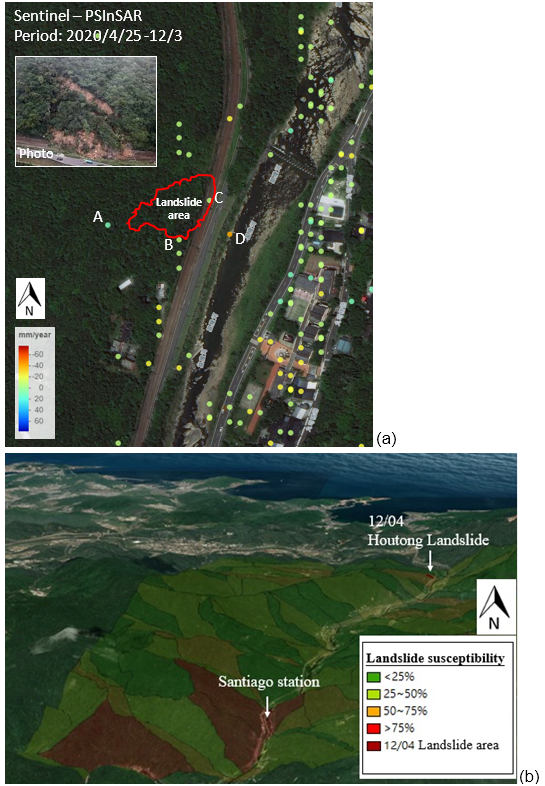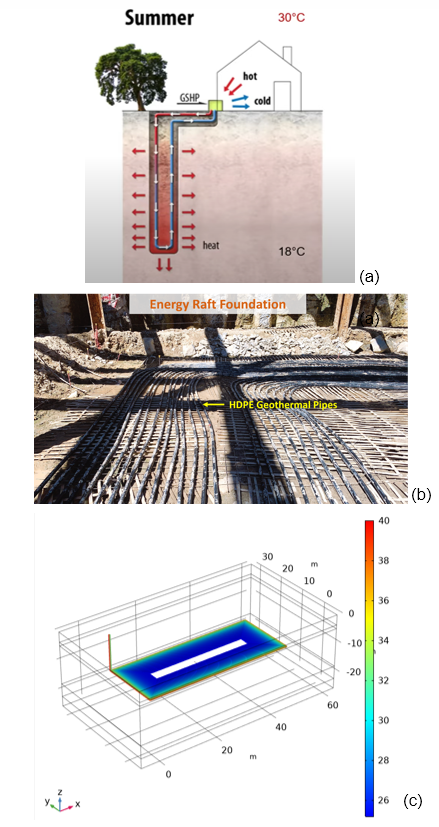
目前研究 / Current Research 科技部整合型研究計畫-淺層崩塌災害多元調查、分析與整治工法之發展與整合研究
Landslide model and validation: (a) full-scale test by Moriwaki et al. (2004); (b) numerical results of final deposited slope (deformed mesh) and development of shear band (shear strain contour) after landslide Video of landslide modeling using material point method (MPM)
科技部2030跨世代年輕學者方案(優秀年輕學者)研究計畫
GRS wall model test setup: (a) photo; (b) illustration and instrumentation
Deformation of GRS wall upon rainfall: (a) test result; (b) shear strain by Geo-PIV analysis
Observation of rainfall infiltration using fluorometer: rainwater reaches (a) one-third of wall height; (b) the wall base Video of reduced model test on GRS wall subjected to rainfall
農業部農村發展與水土保持署委託計畫
GRS wall subjected to flood: (a) real case located within the ramp of the Shalu Interchange of National Freeway No. 3, Taichung; (b) model test
科技部2030跨世代年輕學者方案(優秀年輕學者)研究計畫
GRS foundation model test setup: (a) photo; (b) illustration and instrumentation
Test and FE results for ground settlement and angular distortion of foundations subjected to fault offset: (a) unreinforced; (b) reinforced
Propagation of shear rupture by Geo-PIV analysis: (a) unreinforced (breakthrough at ground surface); (b) reinforced (effectively intercepted by the top geosynthetic layer)
交通部台灣鐵路管理局委託計畫-邊坡巡檢精進系統建置
Verification of Landslide susceptibility analysis uing 12/04 Houtong Landslide: (a) InSAR data overlapped with google earth image (actual landslide areas are highlighted in read color); (b) landslide susceptibility map
台大-伊利諾大學共同研究與創新種子計畫
Use of shallow ground geothermal energy as a renewable and sustainable energy resource: (a) ground source heat pump and geothermal energy system; (b) photo of energy raft foundation in Taipei; (C) numerical simulation of heat exchange between geothermal pipe and adjacent soils. | |||

